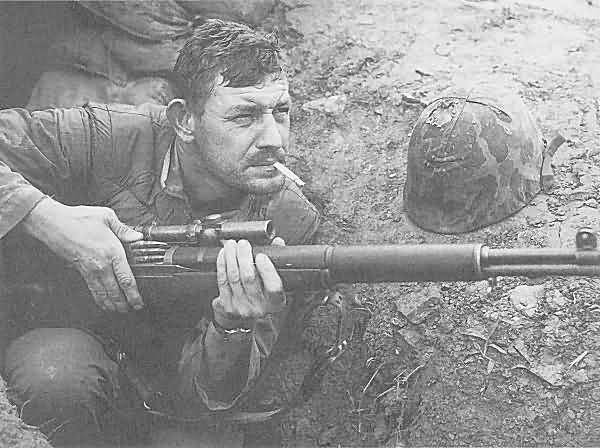5th Marines Staff Sergeant John E. Boitnott of Kentucky, credited with nine kills, poses for a combat photographer during a break in the action in July 1952. Having a PFC volunteer draw enemy fire by walking around, Boitnott was able to identify and sight-in on enemy positions.
Note the extremely worn finish on the M82 sight. The M82 had a magnifying power of 2 1/2 diameters, a field of view of 35 yards at 100 yards, and universal (fixed) focus. The tube diameter was .866 inch, and the overall length of the scope was 12.875 inches with the rubber eyepiece and objective shield extended.
In Korea, snipers achieved reasonably consistent results with the M1C between 400-600 yards, with 600 being the maximum effective range. Partly this was due to the poor resolving power of issue scopes, and partly the lack of match grade ammunition. USMC snipers used regular issue .30-caliber ball ammunition. When obtainable, the heavier .30-caliber armor-piercing ammunition was used, for its increased stability at longer ranges, although both lighter and less accurate than match grade.
Like the M1, the M1C was a robust weapon, maintaining proper function and accuracy very well under combat conditions.



